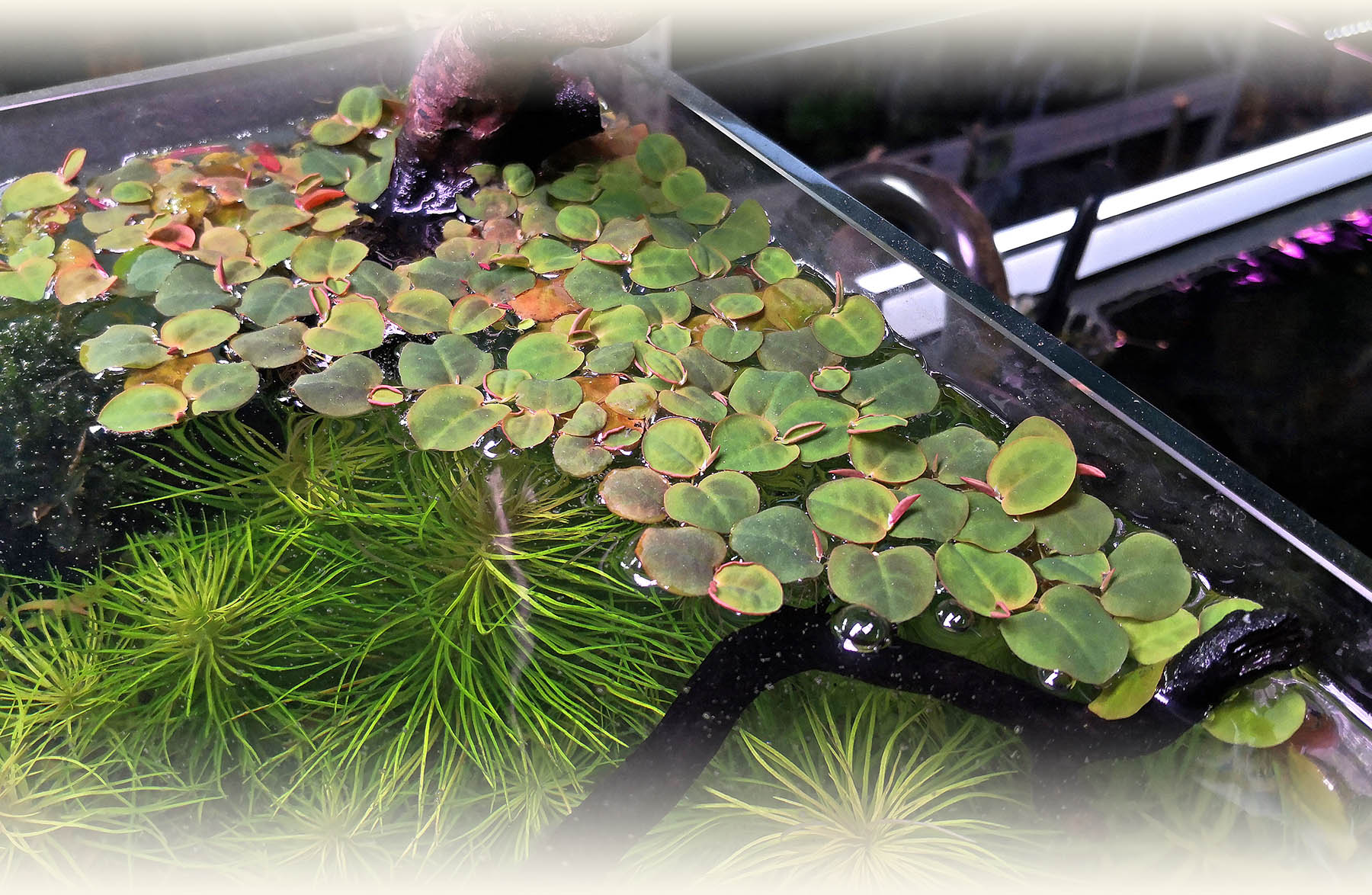Your Cart is Empty
Floaters: a dangerous love affair?
February 18, 2025 3 min read

Floaters are amazing plants.
They are great at purifying water by absorbing nitrates and ammonia as a source of nitrogen. By absorbing excess nutrients and reducing the amount of light, they often help to control algae, especially in outdoor ponds. They also provide shelter for shy fish.
Botanically, their main advantage over submerged aquatic plants is their access to air (especially CO2). Approximately 50% of plant mass comes from carbon (via carbon dioxide) and while the concentration of carbon dioxide in air is around 400ppm (parts per million), underwater it is around 1-2ppm. This is why CO2 injection makes such a big difference to plant growth. Without CO2 injection, it is like trying to build muscle without easy access to protein: possible, but much harder.
Having access to air and a comparatively large amount of carbon dioxide makes floaters extremely powerful. So powerful, in fact, that they are often a danger to other plants when kept together in an indoor aquarium.
What danger?
Their dominant position (closer to the light, access to CO2) means that they reproduce much more quickly in comparison and quickly shade submerged plants. Most aquarium lights are not that powerful compared to natural sunlight - so even small amounts of shading from floaters can cause aquatic plants growing below them to suffer from a lack of light.
If you have floaters in your aquarium, there is a good chance that the submerged plants are not doing as well, simply because they don't have enough access to light. Even a little shade goes a long way.
In addition, if you add a nutritious fertiliser with good intentions, it is likely that up to 90% of this extra food will be taken up by the floating plants, leaving little (or nothing) for the submerged plants. Like animals, plants compete for nutrients and show no mercy. The dominant species (and floaters will easily dominate submerged plants) will hoard all the good stuff.

Above: Amazon frogbit (Limnobium laevigatum) is popular in indoor aquariums as it has smaller leaves than its larger cousins such as Eichhornia crassipes (water hyacinth), Pista stratiotes (water lettuce) and Ludwigia sedioides (Mosaic flower) etc.
But without them I get algae!
Floaters are beneficial as they help to absorb ammonia/nitrates and other contaminants such as heavy metals. So in a tank with an undersized filter (or too many fish or too much light) they can often actually help reduce algae by absorbing the excess waste in the water.
So we are not against swimmers. However, we generally don't keep them in tanks where we want the submerged plants to grow well. It is like saying it is possible, but not easy, to keep cats and birds in the same room.

Some popular smaller size floaters to use in a tank include Limnobium laevigatum (Amazon Frogbit), Phyllanthus fluitans (red root floaters- above), Salvinia natans, Azolla carolinana etc. Lemna minor (Duckweed) propagates a bit too quickly and is very small in size; which makes it difficult to manage for many hobbyists.
So what can I do?
If you want to improve the growth of your submerged plants, but also want to keep your floaters, you can consider the following:
1.Restrict the floaters to the edges of the aquarium or to an area where they will not shade your submerged plants. If you make this change and already have weak submerged plants, it may cause temporary algae growth. The solution is to add more submerged plants so that most of the light-exposed area is covered by plants. Open areas without plants and exposed to light are always susceptible to algae.
2. Be vigilant in controlling the mass/volume of floating plants and remove excess plants regularly. Remember that growth is exponential. By keeping your floater population under tight control, more light and nutrients will be available to the submerged plants.
3. Provide rich aquasoil and/or root fertilisers to your (rooted) submerged plants. Such nutrition would be less immediately accessible to the floaters, giving the submerged plants a better chance at securing vital minerals.
unlock your true potential
Grow anything, defeat algae, create amazing aquascapes

























